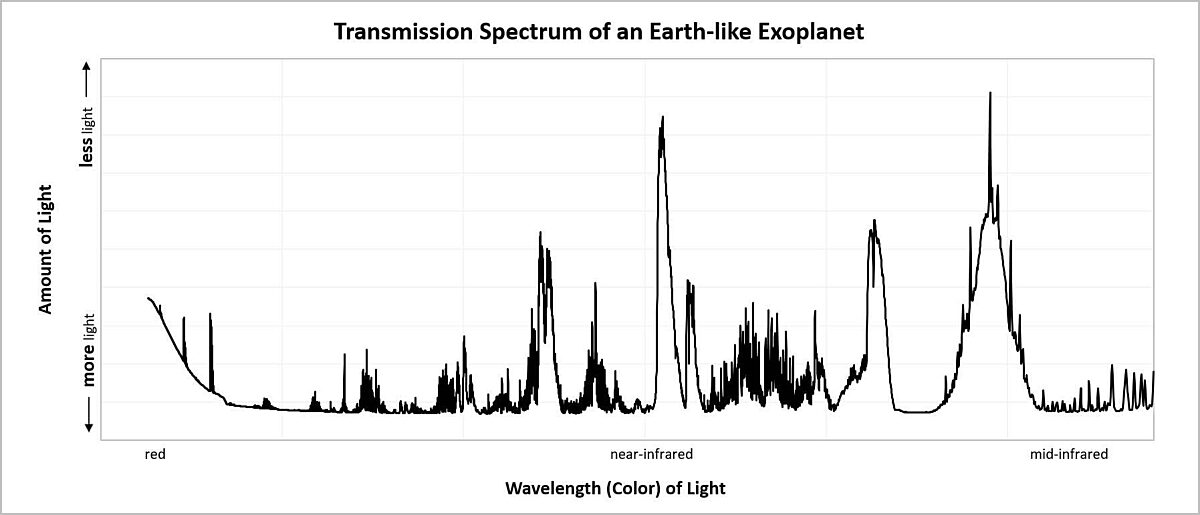Earthlings as aliens
Part of what makes the search for life so fascinating is the way it contextualizes our existence here on Earth. If there is indeed intelligent life out there, those beings may be searching for us just as we are searching for them.
So, if aliens were to detect our presence, what might they find?
Imagine an alien civilization light-years away from Earth at about the same level of technological development as humans. They may detect Earth’s existence — an exoplanet from their perspective. They’d know that it is at the right distance from the Sun to support liquid water on the planet’s surface, and if those aliens were water-based life forms like us, they might see this as a promising sign of habitability.
If they focused their observations on us using an instrument akin to the James Webb Space Telescope or Habitable Worlds Observatory, they could potentially analyze our atmosphere and discover oxygen (a potential sign of biological activity) and perhaps industrial pollutants (good indicators of technological activity). If they pointed radio telescopes at us, they might pick up transmissions we’ve sent out over the years.

Another way aliens could discover evidence of human activity is through the artifacts we’ve sent into space. The Voyager and Pioneer probes are equipped with messages for any beings who might encounter them long after they leave the Solar System. Although the chances are slim that they’d be found in the vast emptiness of space, it’s still possible. Some intelligent, space-exploring aliens could someday find these artifacts and learn about Earth, its creatures, and human cultures.
The Lucy spacecraft is a different kind of artifact. Right now, Lucy is on its way to study the Jupiter trojans, groups of asteroids that share Jupiter’s orbit around the Sun. After it completes its study of its targets, Lucy will continue to orbit the Sun for millions of years. It carries a sort of time capsule from Earth just in case it’s someday discovered by an alien species that comes to our Solar System in search of us, only to find that humans have long since gone extinct.
This possibility may sound bleak, but it’s another avenue for something deeply meaningful. Somehow, someday, our species and its capabilities might come to be known by others who share our most fundamental characteristic: life.

Support our core enterprises
Your support powers our mission to explore worlds, find life, and defend Earth. You make all the difference when you make a gift. Give today!
DonateThe Planetary Report • September Equinox
Help advance space science and exploration! Become a member of The Planetary Society and you'll receive the full PDF and print versions of The Planetary Report.


 Explore Worlds
Explore Worlds Find Life
Find Life Defend Earth
Defend Earth


